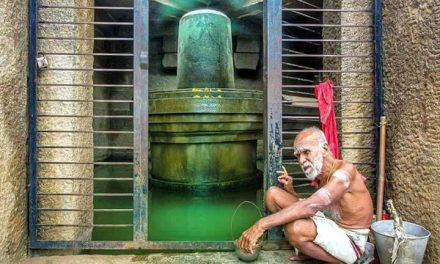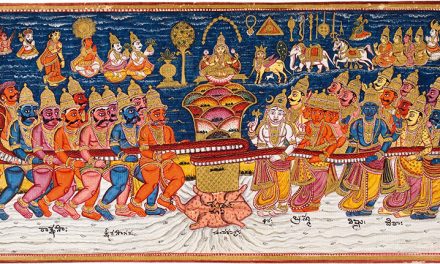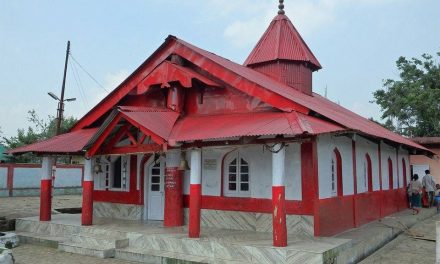Like earliest civilizations – the Aryan, Egyptian, Babylonian, Assyrian which were established on the banks of rivers, Prachi Valley Civilization, one of the glorious civilizations of Orissa, flourished on the banks of Prachi. No one can be able to imagine about the greatness of such a splendid civilization without thorough investigation. Though small in size as compared to big rivers of Orissa like Mahanadi, Brahmani, Birupa, Budhabalanga, Subarnarekha, it contains the hidden treasure of a magnificent past. Originated from the river Kuakhai and covering approximately 48 kilometers, it falls into the sea near Keutajanga village of Kakatpur P.S.
To the south of Kuakhai, the Prachi is known as the Gambhariganda. Near Bhinzarpur, it is connected with Kushabhadra, a branch of Kuakhai. To the south of Bhinzarpur, Prachi, in the name of Sola river, flows down Govindaramapatna. The Sola river is then connected with Devi river, the lower course of Kathajodi and two streamlets called the Banrei and the Kaliaghai. After a long coverage, it passes through the village Kakatpur and falls into the Bay of Bengal.
Traditions confirmed by local chronicles reveal that most of the monuments of Prachi valley, which are now in all stages of decay, were constructed during circa 7th Century to circa 15th Century A.D. The greatness of these religious edifices were left to decay with time and most of them are ruined today. Many splendid monuments which have been attracting and keeping the public attention since their foundations have remained as places of worship. A systematic study of the Prachi Valley shows that major Indian religions like Buddhism, Jainism, Saivism, Saktism and Vaishnavism grew chronologically, without attacking the religious and philosophical sentiments of the people of those days. The worship of Madhava, one of the twenty-four manifestations of Lord Vishnu in Prachi Valley, is very common and had an immense influence on that area.
As we all know, Madhava is one of the manifestations of Lord Vishnu. Although, Vishnu has one thousand significant names of praise, only twenty-four are considered to be the most important and are daily recited by brahmanas/Vaisnavas in their daily prayer. These twenty-four manifestations are alike in their chronographic features, i.e. they are all standing figures, with no beds in the body, possessing four arms, and adorned with kirita (crown) and other usual ornaments; each of them stands upon a padmasana.
The difference between any two of these images can be identified by the way in which the Sankha, the Chakra, the Gada and the Padma are found distributed among their four hands. Rupamandana furnishes the twenty-four names of Vishnu and corresponding arrangements of four Ayudhas in the four hands, in each case. In the case of the Sri Madhava deity, he mentions that the manifestation of Lord Madhava holds a Chakra in His back right hand, Sankha in His back left hand, Padma in His front left hand and Gada in His front right hand.
The history of Madhava worship in India is traced from the time of extension of Vaisnavism with various forms of Vishnu. This popular religion might have flourished in Orissa in the dawn of its reflection, but archaeological evidences suggest its existence from the time of the Matharas, the contemporary of Guptas. The Mathar rules embraced the Vaisnavite principles and built monuments in honour of Vishnu. So far as Prachi Valley is concerned, it is said that this valley is very famous for the worship of Dvadasa Sambhu and Dvadasa Madhab. A short reference to the Dvadasa Madhava and several other images of the same in the valley is required to indicate the significance of the cult.
The first among Dvadasa Madhava is seen in the premises of Kapileswar Temple. Since the temple is no longer in existence, it is kept in a pitiable condition in the Gokarneswar temple. Triveni Madhava is worshipped at the confluence of Triveni near Vileswar temple. This place is popularly known as Manikarnika Tirtha and is sanctified by Triveni Madhava. Here, the image is worshipped with Lakshmi. Niali, about 50 kms. from Bhubaneswar on the eastern bank of Prachi is famous for Sovaneswar Temple, built in 1780 AD and Madhava temple. In course of time, the Madhava temple was broken down. Eight such beautiful images of Madhava and one image of Varaha are kept in the compound of Sovaneswar Temple at Niali.
In addition, the following sites of Prachi Valley contain the images of Madhava; two Vishnu images are affixed inside the Jagamohan of the Brahma temple at Niali; Madhava images kept under a tree at Korakara, the unique Madhava image worshipped as Lalita- Madhava at Chahata; two Vishnu images kept inside Jagamohan of Amaresvara temple of Amaresvara; two beautiful images worshipped inside a thatched room at Pitapara; the Vishnu image having size 4’6″ inside the Natamandira of the Ramesvara temple at Suhagpur; Madhava images worshipped in miniature temple inside the compound of Gramesvara temple at Nivarana; the image worshipped inside a renovated temple as Nila-Madhava at Nilakanthapur; Madhava images inside the temple compound of the Mangala at Kakatpur; Madhava images inside the Jagamohana of Gramesvara Siva temple at Lataharana; Mudgal Madhava in the village Mudgal; the images inside the Jagamohana of Somesvara temple at Somesvara; the image inside the Visvanatha temple at Krishnaprasad; the Vishnu images at Kenduli, the birth place of noted Sanskrit Poet Sri Jayadev; Madhava image at Adasapur; Madhava Deity inside the Gokarneswar temple at Kantapara; Madhava image in the village Bolara; Madhavba in the village Raghunathpur, P.S. Kakatpur; Madhava image in the village Gambharipada; and the Vishnu image inside the Siva temple at Nasikesvara.
All these images give a clear picture of the Madhava cult which is now prevalent in Prachi Valley. Besides Madhava worship in Prachi Valley, development of this cult is found in other parts of Orissa. Nilamadhava temple in the district of Phulbani, Nilamadhava of Kantilo, Lokamadhava image in the village Aradi located on the bank of Mahendra Tanaya of Parlakhemundi, and Dvadas Madhava in Biraja Kshetra at Vailarani are the good examples of this cult.
Regarding Dvadasa Madhava, the names depicted in Viraja Mahatmya (Manuscript preserved in the Orissa State Museum) are found something different from the names of Madhava images of Prachi Valley. Viraja Mahatmya enumerates the names of Madhava as the following:
1. Adimadhava
2. Ananta Madhava
3. Bhoga Madhava
4. Champak Madhava
5. Ramamadhava
6. Prasanna Madhava
7. Prusottam Madhava
8. Sudarsan Madhava
9. Janardan Madhava
10. Narakantak Madhava
11. Vasudev Madhava
12. Govinda Madhava
The sites and archaeological remains of Viraja Kshetra have been surveyed, but no trace of Madhava Sculptures are found there. It is expected that on account frequent Muslim attacks, the Shrines of Madhava might have been dashed into pieces along with the other temples of the Kshetra.
Similarly in Prachi Mahatmya, edited and compiled by Sri Balaram Dash, published in the year 1975, we find some references to Dvadasa Madhava, but these names of Madhavas are attached to particular place names – for example Madhava of Village Madhava, Lalita Madhava, situated between the river Prachi and Lalita, Bolara Madhava of village Bolara, Mudgal Madhava of Village Mudgal, etc. There is no clear cut description on the other Madhava images or where they have been taken from. It is supposed that they might have been transferred to other places due to damage of their respective shrines.
Regarding deterioration of temples on the Prachi Valley, it can be said that most of the monuments were constructed with bricks and mortars. These organic materials certainly met their natural decay in due course of time. The reason is that water, both in liquid and vapor form, accelerates the chemical process of deterioration. For example, stone, bricks and metals deteriorate much faster in the presence of water. On the other hand, decay is slow under dry conditions. Another factor of deterioration is climate. The climate of a place is the sum total and result of many factors like sunshine, precipitation, humidity and temperature governed by the altitude, latitude, surroundings, and proximity to the sea. As the monuments stood on the banks of Prachi and had close proximity to the sea, deterioration is obvious.
Observing the extremely beautiful eight images of Madhava, the noted historian K.N. Mohapatra pointed out that such shifting of the Madhava image to Sovaneswar Temple was due to the attack of Moghuls. Fortunately the Moghul army was defeated and the temple of Soveneswar and sculptures kept in the compound could be saved. From this, it is supposed that there was the possibility of foreign attack of those monuments and some people might have demolished the structures in order to conceal the place. Whatever may be the intention, these monuments and deities have been attracting the devotees far wide and influencing their religious lives to a great extent. Simultaneously, they have been demonstrating the artistic capabilities to the Oriya sculptures of those days.













